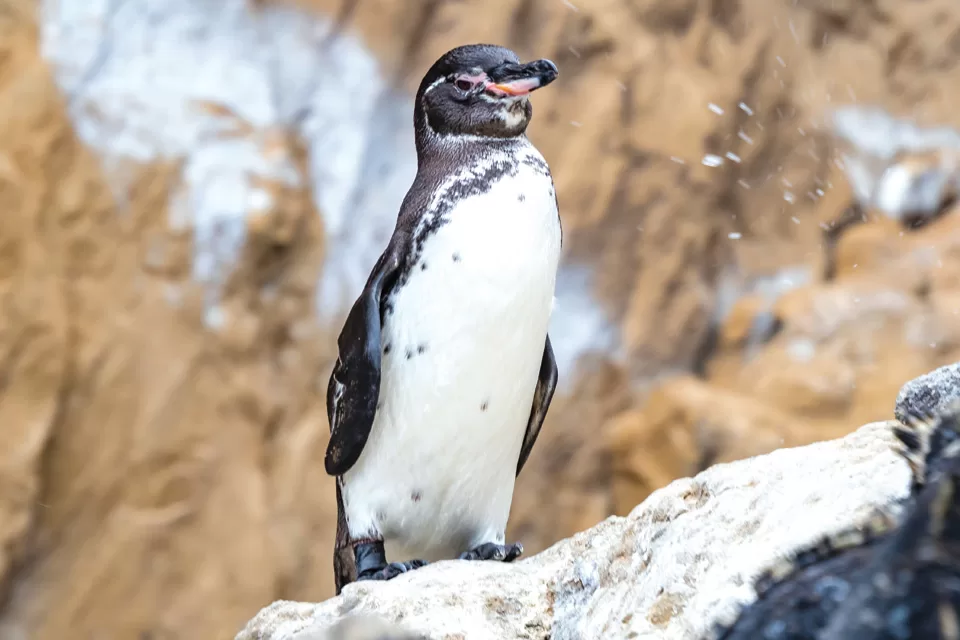
Due to years of decline, only about 1,200 Galapagos penguins currently remain in the wild. Almost all of these remaining penguins are clustered in a small satretch of territory along the coast of the island chain.
To understand how the Galapagos penguin population became so small is to understand the history of the region. Up to 77% of the Galapagos penguin population was wiped out by the 1982/1983 El Niño Southern Oscillation event, leaving only 463 total birds. A slow recovery began in 1985. However, a further decline of 66% of the population occurred during the 1997/1998 ENSO. There are important conservation efforts being conducted by several organizations, but they still remain vulnerable and extremely endangered.
This is the only penguin species found north of the equator and in the Galapagos. The cool waters of the Humboldt and Cromwell Currents allow it to survive despite the tropical latitude.
The Galapagos Penguin is the smallest South American penguin. As adults this species weighs between 3.7 to 5.7 pounds and is 12 to 21 inches tall. Their lifespan is estimated to be between 15 and 20 years.



As with all penguin species, they are extremely agile underwater when hunting. Their diet consists primarily of cold water-schooling fish, such as anchovies, sardines and mullet.
Galapagos penguins breed year-round. Unlike the Antarctic penguins, Galapagos penguins do not need to worry about their eggs freezing. Instead, they have to worry about them overheating or being attacked by egg predators. Galapagos penguins nest along the shoreline and, when nesting, one parent feeds while the other cares for the one or two eggs. Incubation takes longer than one month. Galapagos penguins form strong pair bonds and remain with the same partner for their entire lives.
On land, snakes, owls and hawks are potential predators, but predation by them is generally minimal. Introduced cats and rats frequently attack both adults and eggs.
In the sea, penguins may be hunted by sharks, fur seals or sea lions, and they are sometimes caught as by catch in fishing nets. El Niño events dramatically influence reproductive rates, often causing a large proportion of the population to die of starvation. They are also potentially at risk from marine plastic pollution.
Luckily, the entire world’s population of Galapagos penguins is protected within the Galapagos National Park and Galapagos Marine Reserve. The Galapagos National Park Service, which manages these areas, strictly regulates access to breeding sites and attempts to control introduced predators.
Galapagos penguins can’t be found anywhere else, not even in captivity.

